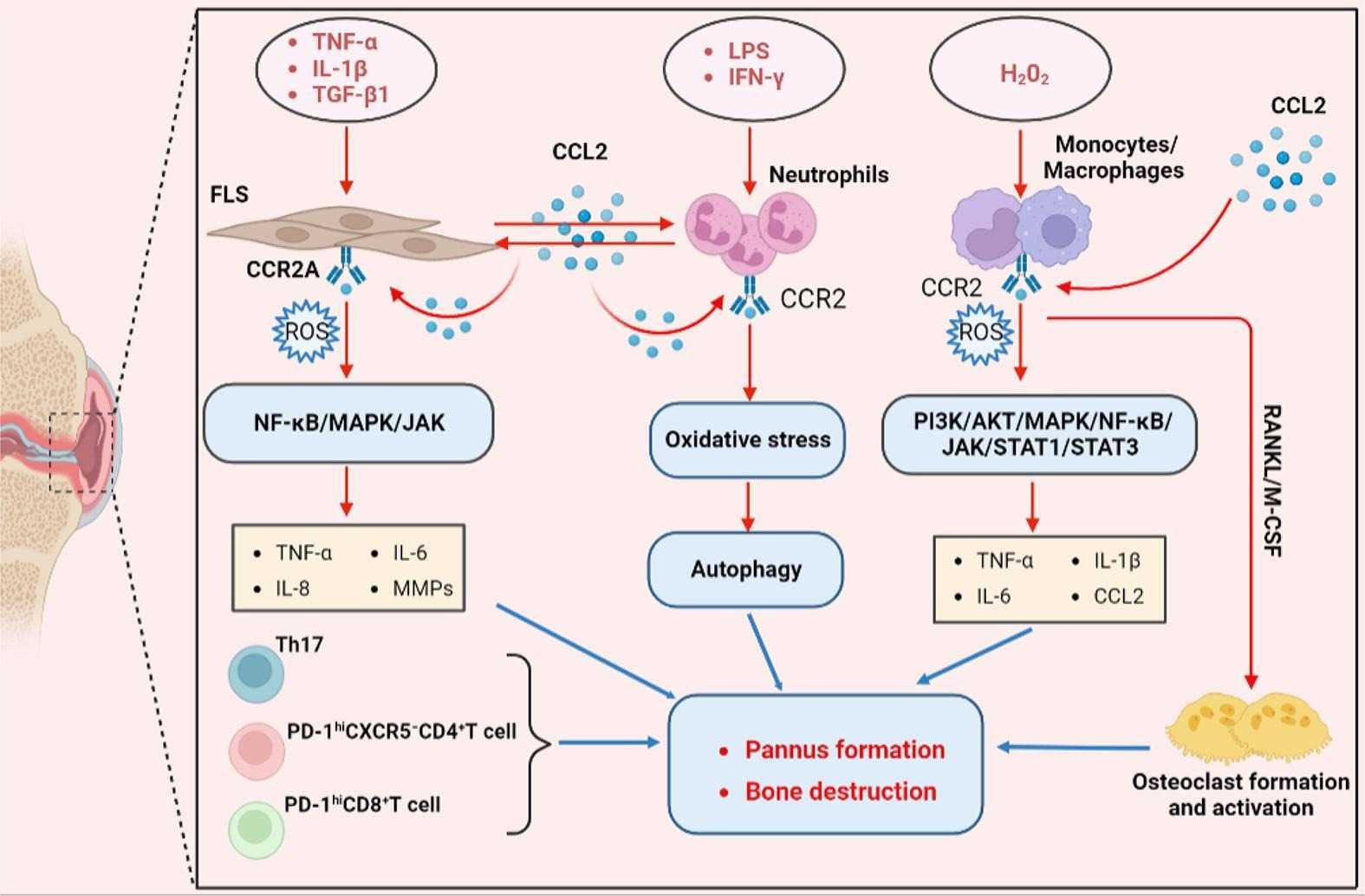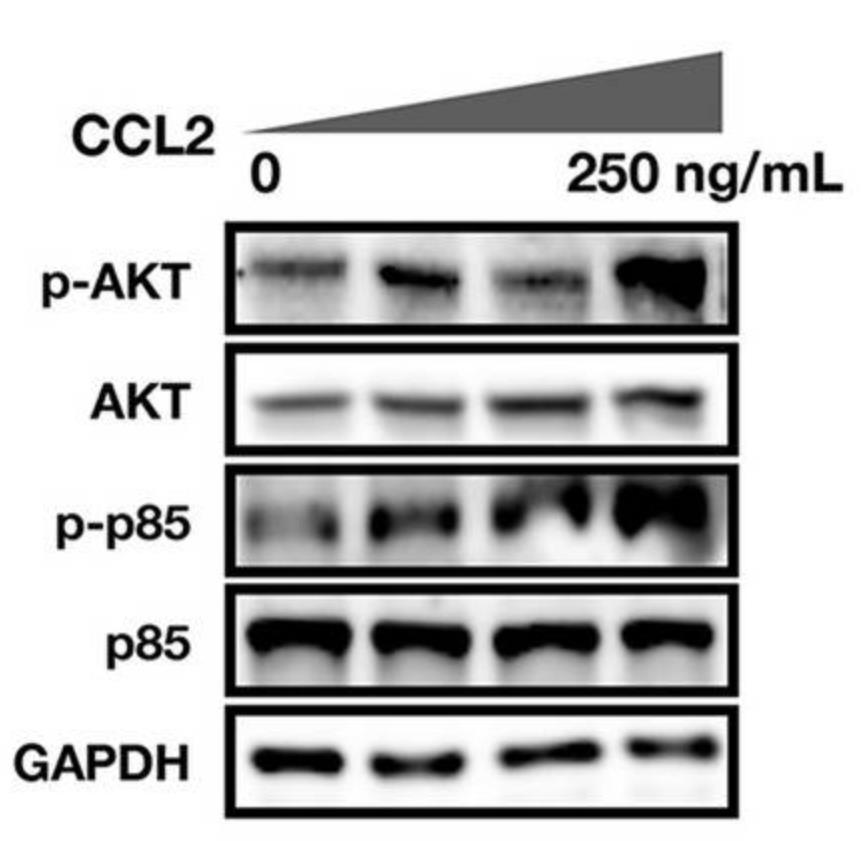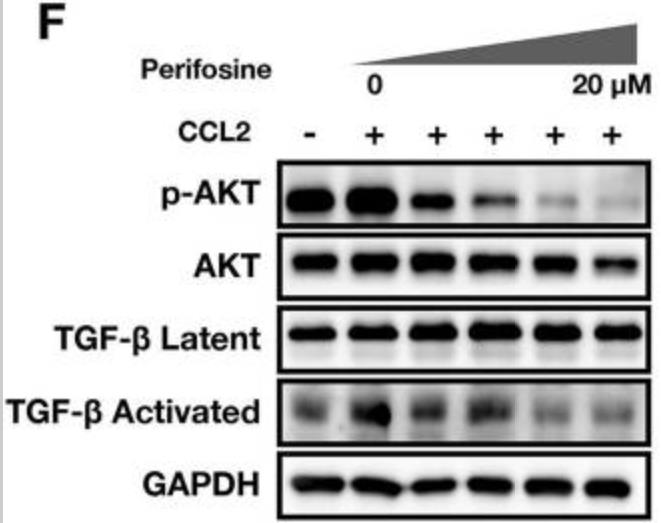CCR2
-
Official Full Name
chemokine (C-C motif) receptor 2 -
Overview
This gene encodes two isoforms of a receptor for monocyte chemoattractant protein-1, a chemokine which specifically mediates monocyte chemotaxis. Monocyte chemoattractant protein-1 is involved in monocyte infiltration in inflammatory diseases such as rheumatoid arthritis as well as in the inflammatory response against tumors. The receptors encoded by this gene mediate agonist-dependent calcium mobilization and inhibition of adenylyl cyclase. This gene is located in the chemokine receptor gene cluster region. Two alternatively spliced transcript variants are expressed by the gene. [provided by RefSeq, Mar 2009] This gene encodes two isoforms of a receptor for monocyte chemoattractant protein-1, a chemokine which specifically mediates monocyte chemotaxis. Monocyte chemoattractant protein-1 is involved in monocyte infiltration in inflammatory diseases such as rheumatoid arthritis as well as in the inflammatory response against tumors. The receptors encoded by this gene mediate agonist-dependent calcium mobilization and inhibition of adenylyl cyclase. This gene is located in the chemokine receptor gene cluster region. Two alternatively spliced transcript variants are expressed by the gene. -
Synonyms
CCR2;chemokine (C-C motif) receptor 2;CKR2;CCR-2;CCR2A;CCR2B;CD192;CKR2A;CKR2B;CMKBR2;MCP-1-R;CC-CKR-2;C-C chemokine receptor type 2;MCP-1 receptor;monocyte chemotactic protein 1 receptor;monocyte chemoattractant protein 1 receptor;FLJ78302;MGC103828;MGC111760;MGC168006;C-C CKR-2;OTTHUMP00000209948
Recombinant Proteins
- Human
- Rat
- Mouse
- Chicken
- Rhesus macaque
- Macaca mulatta
- HEK293
- Wheat Germ
- Mammalian Cells
- E.coli
- In Vitro Cell Free System
- Non
- GST
- His
- Flag
- Fc
- Myc
- Avi
Background
What is CCR2 Protein?
CCR2 gene (C-C motif chemokine receptor 2) is a protein coding gene which situated on the short arm of chromosome 3 at locus 3p21. The protein encoded by this gene is a receptor for monocyte chemoattractant protein-1, a chemokine which specifically mediates monocyte chemotaxis. Monocyte chemoattractant protein-1 is involved in monocyte infiltration in inflammatory diseases such as rheumatoid arthritis as well as in the inflammatory response against tumors. The encoded protein mediates agonist-dependent calcium mobilization and inhibition of adenylyl cyclase. This protein can also be a coreceptor with CD4 for HIV-1 infection. The CCR2 protein is consisted of 374 amino acids and CCR2 molecular weight is approximately 41.9 kDa.
What is the Function of CCR2 Protein?
The binding of CCR2 to its ligand CCL2 (also known as monocyte chemotactic protein-1, MCP-1) is one of its main functions, and this binding promotes the migration of monocytes and macrophages, which is essential for the recruitment of immune cells at the site of inflammation. CCR2 signaling pathway plays an important role in intestinal immune regulation under physiological conditions, affecting stromal cells, angiogenesis and remodeling. At the molecular level, CCR2, when activated by binding to ligands, can activate downstream signaling pathways including PI3K, PLC-Gamma, and ERK, which further promote the release of inflammatory cytokines and chemokines, as well as immune cell migration. In addition, the expression and function of CCR2 are also associated with tumor development, for example, in the microenvironment of hepatocellular carcinoma (HCC), tumor-associated macrophages (TAMs) of CCR2+ promote tumor growth, invasion and metastasis by secreting multiple cytokines.
CCR2 Related Signaling Pathway
The interaction of CCR2 with its main ligand, CCL2, plays a central role in immune cell recruitment and inflammatory response. This interaction activates G protein-coupled receptors, which in turn trigger downstream signaling pathways, including PI3K/Akt, MAPK/ERK, and NF-κB, that are critical for cell proliferation, migration, and differentiation. In the tumor microenvironment, the CCL2-CCR2 axis promotes tumor growth, invasion, and metastasis by promoting the recruitment and invasion of tumor-associated macrophages (TAMs) and by activating signaling pathways within tumor cells, such as ERK1/2-MMP2/9. In addition, the CCL2-CCR2 axis is associated with other diseases, including cardiovascular and intestinal diseases.
CCR2 Related Diseases
CCR2 is associated with a variety of inflammatory and autoimmune diseases, including but not limited to atherosclerosis, coronary artery disease, heart failure, inflammatory bowel disease, rheumatoid arthritis, multiple sclerosis, and certain types of cancer, such as breast, lung, prostate, and colorectal cancers. In these diseases, CCR2, through the interaction of its ligand CCL2, promotes the migration and infiltration of immune cells, especially monocytes and macrophages, thereby affecting the inflammatory response and the formation of the tumor microenvironment. In addition, abnormal expression or dysfunction of CCR2 has been linked to the development of neurodegenerative and metabolic diseases.

Fig1. Role of CCR2 in human rheumatoid arthritis. (Weile Chen, 2023)
Bioapplications of CCR2
The application of CCR2 is mainly in the field of medicine, especially as a potential target for the treatment of inflammatory diseases and certain cancers. Inhibitors or antagonists targeting CCR2 are being studied to block its interaction with the ligand CCL2 and reduce the infiltration of inflammatory cells, thereby alleviating inflammatory symptoms and limiting tumor growth. In addition, the expression level and functional status of CCR2 also play a role in disease diagnosis and prognosis assessment, which helps to develop new therapeutic strategies and drugs. In cancer therapy, CCR2 inhibitors may help unblock immunosuppression in the tumor microenvironment and enhance anti-tumor immune responses.
Case Study
Case Study 1: Yue Dong, 2024
This study aims to elucidate the regulatory role and molecular mechanisms of CCL2 in the pathogenesis of COPD, providing new insights for therapeutic strategies. This study focused on the CCL2-CCR2 signaling pathway, exploring its role in COPD pathogenesis using both Ccl2 knockout (KO) mice and pharmacological inhibitors. To dissect the underlying mechanisms, researchers employed various in vitro and in vivo methods to analyze the secretion patterns and pathogenic effects of CCL2 and its downstream molecular signaling through the CCL2-CCR2 axis. The results showed that mechanistically, CCL2 was predominantly secreted by bronchial epithelial cells in a process dependent on STAT1 phosphorylation and acted through the CCR2 receptor on macrophages.

Fig1. Western blot assay was conducted to assess the phosphorylation levels of AKT and p85 in THP-1 cells following treatment with CCL2.

Fig2. Western blot assay was conducted to assess the phosphorylation levels of AKT and TGF-β in THP-1 cells treated with CCL2 and perifosine.
Case Study 2: Jinpeng Sun, 2024
Low back pain due to epidural fibrosis is a major complication after spine surgery. Macrophages infiltrate the wound area post laminectomy, but the role of macrophages in epidural fibrosis remains largely elusive. In a mouse model of laminectomy, macrophage depletion decreased epidural fibrosis. CD146, an adhesion molecule involved in cell migration, is expressed by macrophages. CD146-defective macrophages exhibited impaired migration, which was mediated by reduced expression of CCR2 and suppression of the MAPK/ERK signaling pathway. CD146-defective macrophages suppress the MAPK/ERK signaling pathway by increasing Erdr1. In vivo, CD146 deficiency decreased macrophage infiltration and reduced extracellular matrix deposition in wound tissues. Moreover, the anti-CD146 antibody AA98 suppressed macrophage infiltration and epidural fibrosis.

Fig3. Representative flow plots of CCR2 expression in WT and CD146-/- BMDMs.

Fig4. Representative images of H&E-stained surgical regions from surgical mice treated with or without a CCR2 inhibitor.
Quality Guarantee
Involved Pathway
CCR2 involved in several pathways and played different roles in them. We selected most pathways CCR2 participated on our site, such as , which may be useful for your reference. Also, other proteins which involved in the same pathway with CCR2 were listed below. Creative BioMart supplied nearly all the proteins listed, you can search them on our site.
| Pathway Name | Pathway Related Protein |
|---|
Protein Function
CCR2 has several biochemical functions, for example, . Some of the functions are cooperated with other proteins, some of the functions could acted by CCR2 itself. We selected most functions CCR2 had, and list some proteins which have the same functions with CCR2. You can find most of the proteins on our site.
| Function | Related Protein |
|---|
Interacting Protein
CCR2 has direct interactions with proteins and molecules. Those interactions were detected by several methods such as yeast two hybrid, co-IP, pull-down and so on. We selected proteins and molecules interacted with CCR2 here. Most of them are supplied by our site. Hope this information will be useful for your research of CCR2.
Resources
Gene Families
Research Area
- Neuroinflammation
- Cytokine and Growth Factor Receptors on VSMC
- Myeloid Lineage Markers
- Chemokine Receptors
- Negative Regulators of the Jak/STAT Pathway
- Receptors in the Jak/STAT Pathway
- Inflammatory/Monocyte-derived Dendritic Cells
- Regulatory T Cells (Tregs)
- T Cell Migration
- Monocyte Markers
- CC Chemokine Receptors
- MDSC Phenotyping - Positive Markers
Related Services
Related Products
References
- Palacios, BS; Estrada-Capetillo, L; et al. Macrophages from the synovium of active rheumatoid arthritis exhibit an activin A-dependent pro-inflammatory profile. JOURNAL OF PATHOLOGY 235:515-526(2015).
- Srivastava, K; Hu, J; et al. Postsurgical Adjuvant Tumor Therapy by Combining Anti-Angiopoietin-2 and Metronomic Chemotherapy Limits Metastatic Growth. CANCER CELL 26:880-895(2014).


.jpg)
.jpg)


